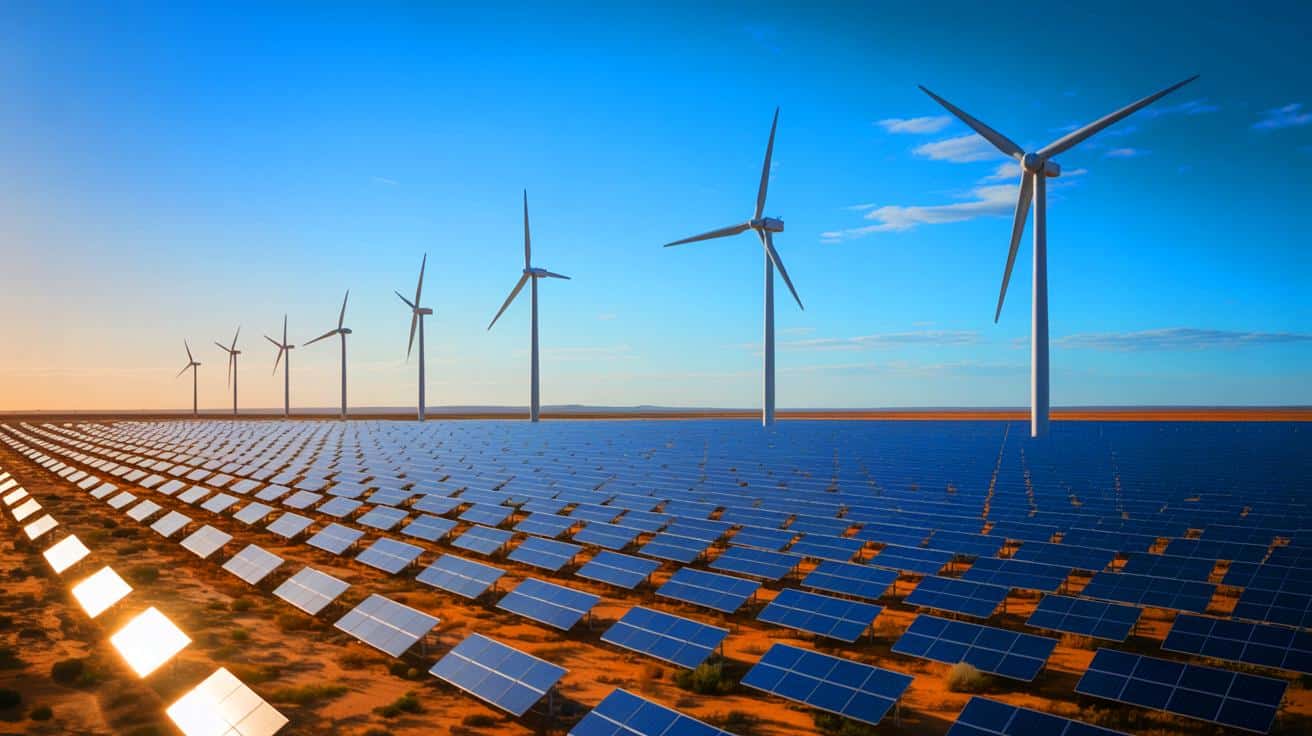IN A NUTSHELL
🌞 Western Green Energy Hub aims to transform energy production with solar panels and wind turbines in Australia.
⚡ The project will generate more than 200 terawatt-hours annually, exceeding Australia’s 2023 electricity output.
🌍 Focused on sustainability, the hub will produce 3.5 million tons of green hydrogen for global export.
🚢 Australia invests in undersea cables to deliver renewable energy swiftly to the Asia-Pacific region.
As the world grapples with the urgent need to transition to renewable energy, a monumental project is taking shape in Western Australia. The Western Green Energy Hub (WGEH) is poised to become one of the largest renewable energy endeavors on Earth. Spanning an impressive 8,763 square miles, it will feature 20 million solar panels and 3,000 wind turbines. This ambitious project aims to revolutionize green energy production and export on a global scale. With a focus on sustainability and innovation, the hub promises to reshape the way energy is generated and utilized, setting a new standard for global energy independence.
Harnessing the Power of Sun and Wind
The WGEH’s massive scale is underscored by its ability to generate approximately 70 gigawatts of installed capacity, translating to over 200 terawatt-hours (TWh) of energy annually. This output surpasses Australia’s entire electricity production in 2023, highlighting the project’s significance. Central to its mission is the production of green hydrogen and ammonia, leveraging solar and wind power to create sustainable energy solutions for homes and businesses.
The project’s vision involves using excess energy to produce around 3.5 million tons of green hydrogen each year. For ease of transport and storage, this hydrogen will be converted into green ammonia, primarily for export throughout the Asia-Pacific region. Countries like Singapore are expected to be key consumers of this green ammonia, driving demand and furthering the project’s global impact. The WGEH is set to unfold in seven construction phases over 30 years, with a goal of establishing around 35 independent energy hubs by 2050.
Desert Infrastructure and Technological Challenges
Constructing such a massive energy hub in a desert environment presents unique challenges. Ensuring the durability of infrastructure and implementing effective cooling systems are paramount for success. Companies like InterContinental Energy and CWP Global are at the forefront of developing technological improvements to meet these demands. Australia’s investment in undersea export cables and port infrastructure will facilitate the instant delivery of electricity to Singapore, utilizing technology similar to the SunCable project.
The scale of the project inevitably brings challenges, testing Australia’s capacity to execute such an ambitious initiative. However, the potential rewards are immense, promising to position Australia as a global power hub while reducing dependence on coal and gas. The success of the WGEH could set a precedent for other nations, encouraging them to pursue similar large-scale renewable energy projects.
Beyond Innovation: Addressing Climate Concerns
While the WGEH represents a significant technological leap, its importance extends beyond innovation. The project addresses pressing climate concerns, offering a proactive response to the increasingly frequent wildfires, heatwaves, and extreme weather events affecting Australia and the world. In tandem with the WGEH, Australia is pursuing other renewable energy initiatives, such as a second solar tree producing 555 kW and advancements in artificial photosynthesis that could surpass traditional coal and hydrogen energy sources.
These efforts reflect a broader commitment to sustainable practices and highlight the potential for renewable energy projects to mitigate the impacts of climate change. By investing in such transformative projects, Australia is setting an example for other nations to follow, showcasing the viability and necessity of transitioning to cleaner energy sources.
Redefining Global Energy Independence
If successful, the WGEH will redefine global energy independence, prompting countries to expand international cooperation and transition to greener power sources. With over 200 TWh of renewable energy expected annually, the project can power millions of homes, contributing significantly to achieving net-zero emissions by 2050. The WGEH’s potential to reshape Australia’s energy landscape may inspire other nations to consider similar initiatives, fostering a global shift towards decarbonization.
As the world watches this groundbreaking project, the WGEH stands as a testament to the possibilities of renewable energy. With 25 million solar panels and 3,000 turbines operating in harmony, the hub exemplifies Australia’s commitment to working with Asian countries to achieve a cleaner, more sustainable future. The project’s success could serve as a catalyst for worldwide efforts to embrace renewable energy and address climate change on a global scale.
The Western Green Energy Hub offers a glimpse into a future where renewable energy is the norm rather than the exception. As Australia undertakes this monumental project, the implications for global energy independence and climate change mitigation are profound. With the potential to power millions of homes and significantly reduce emissions, the WGEH could serve as a model for other nations. As the world navigates the challenges of transitioning to renewable energy, how will other countries respond to the lessons and successes of the WGEH?
This article is based on verified sources and supported by editorial technologies.
Did you like it? 4.6/5 (26)

